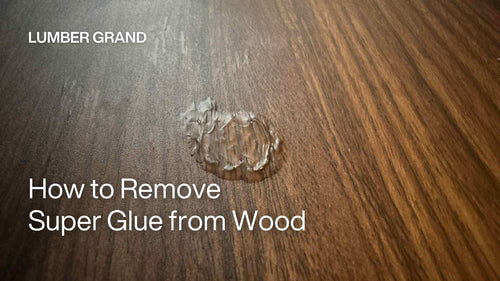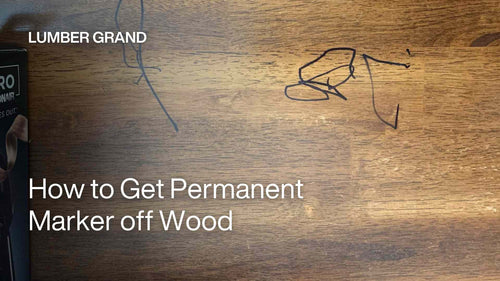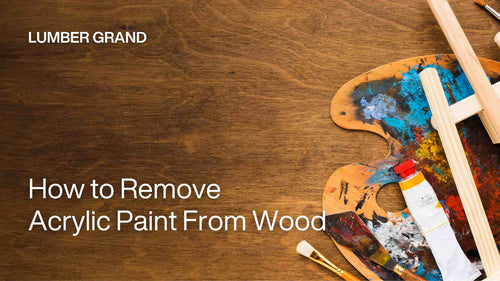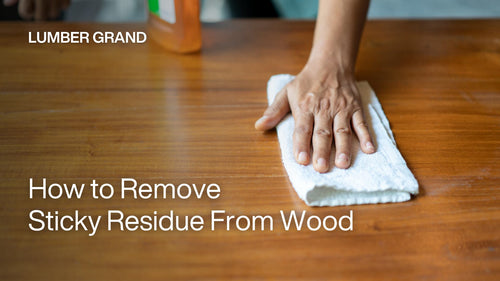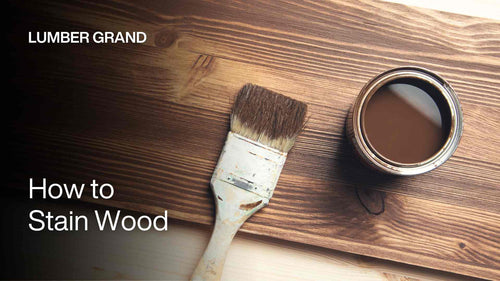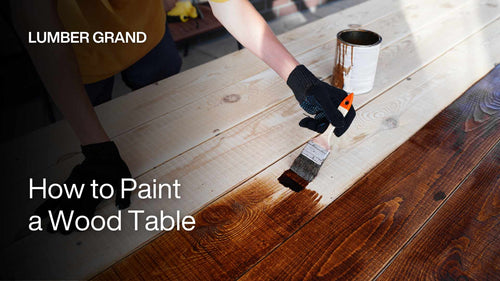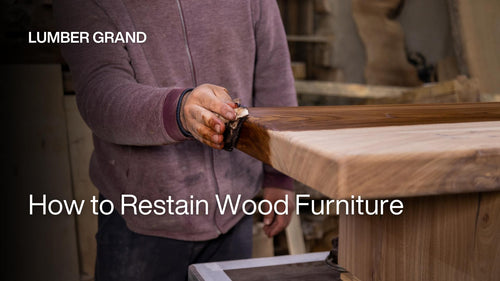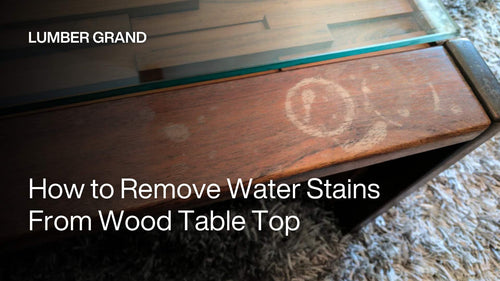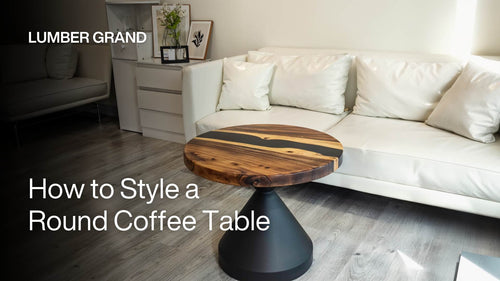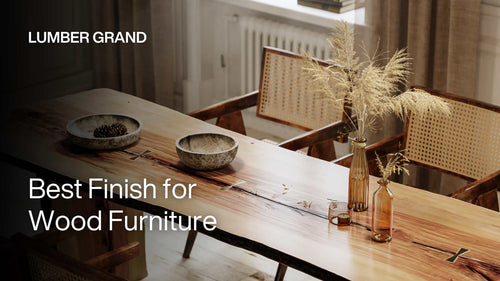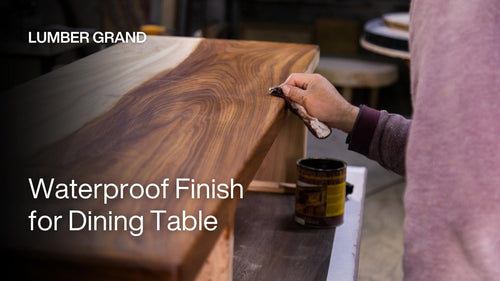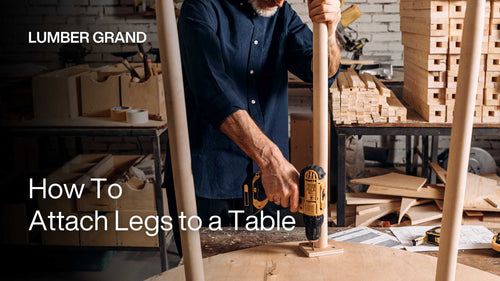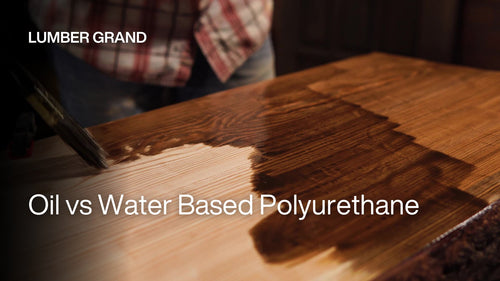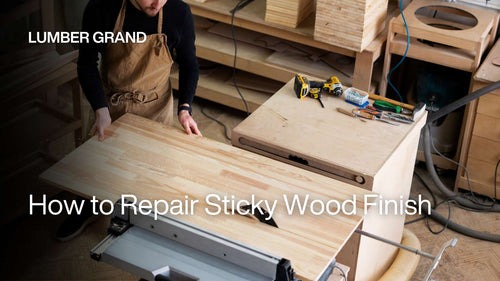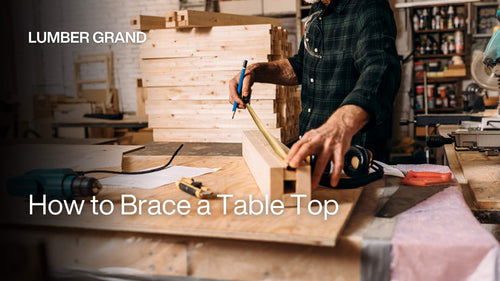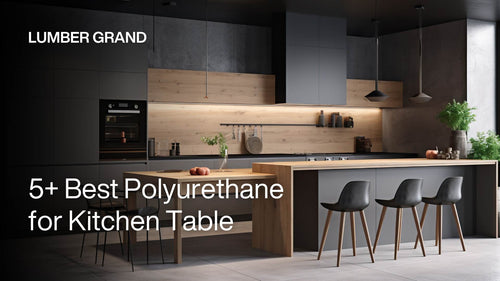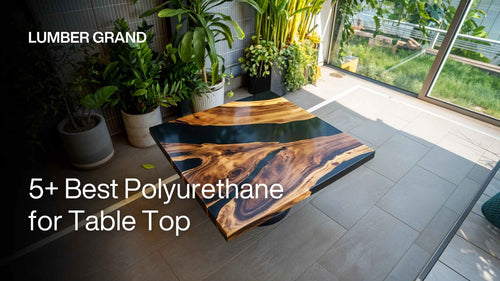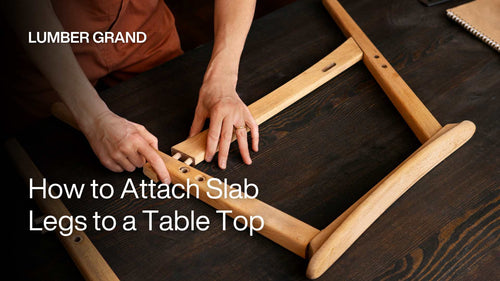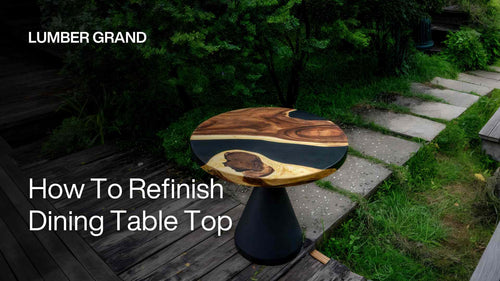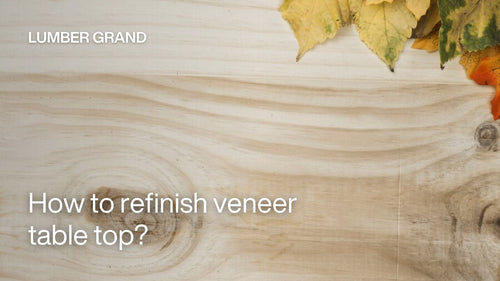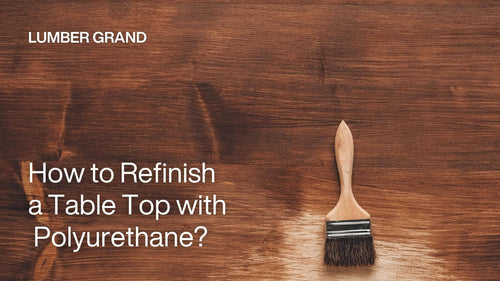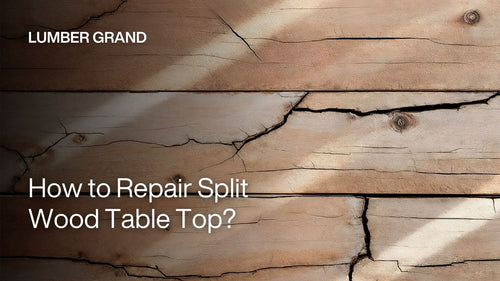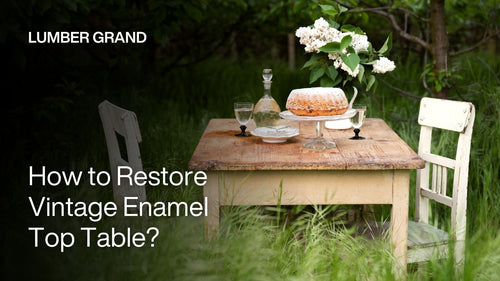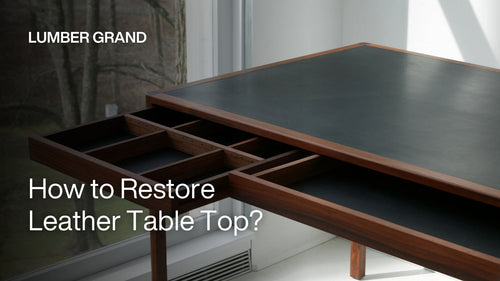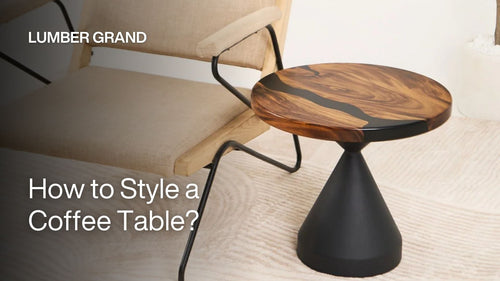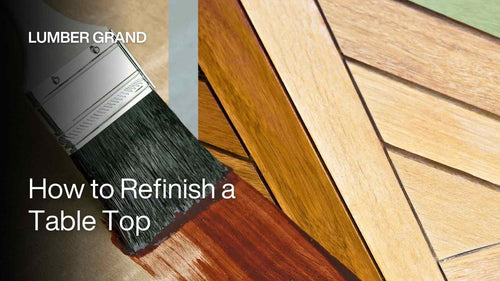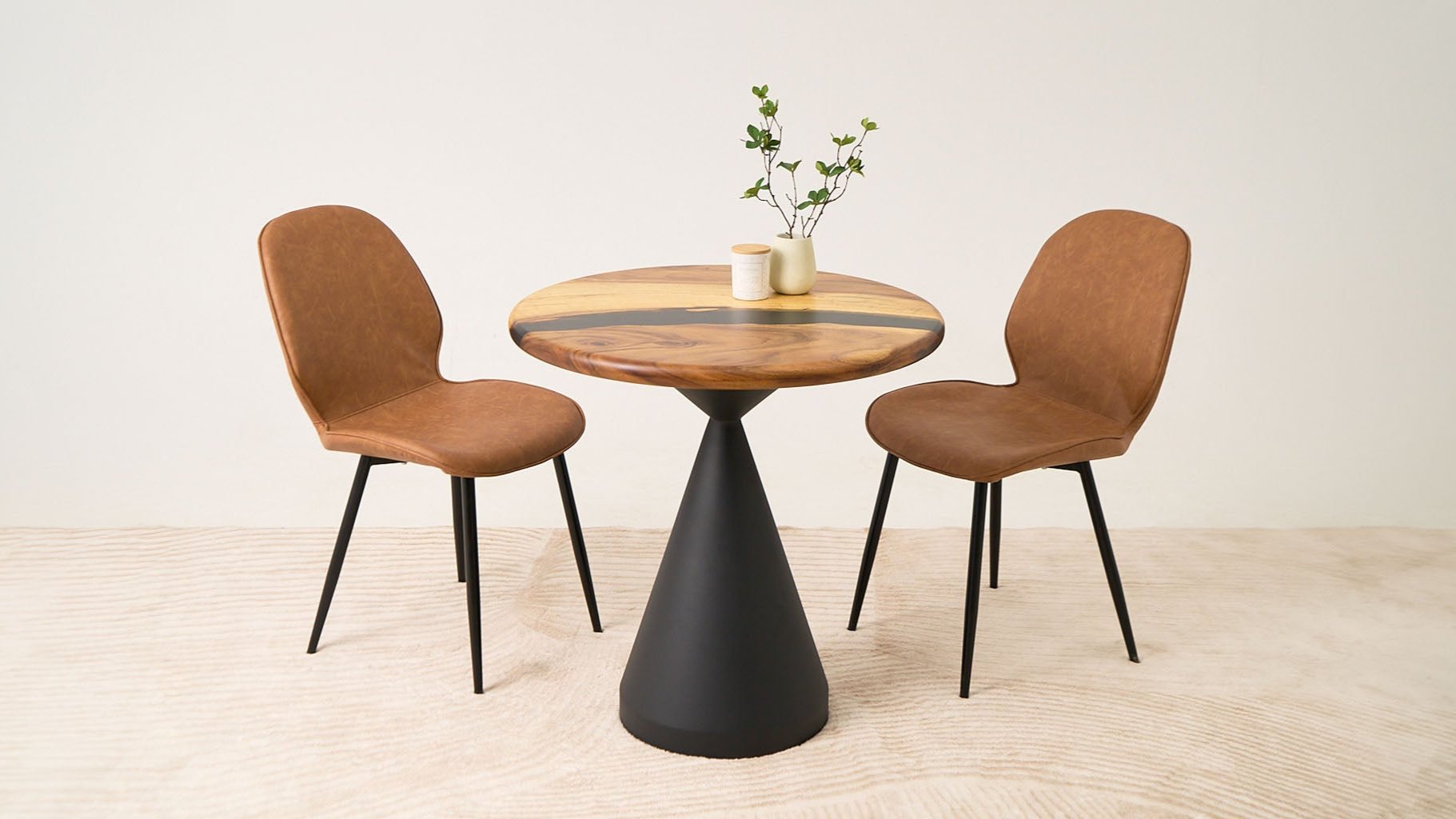Today, Lumber Grand walks you through everything you need to know to create a glow epoxy resin table in the dark, from planning your design to putting on the final finish. You'll learn:
-
How to pick and prep wood slabs for the best results
-
How to calculate exactly how much epoxy you need, so nothing goes to waste
-
The right glow epoxy pouring techniques for a smooth, flawless river
-
How to finish it so the glowing epoxy resin table surface looks crystal-clear and glass-like
-
etc.
No matter if you're making a glow epoxy coffee table, dining table, or desk, this tutorial covers what you need to know, even if you've never touched epoxy resin before. Let's turn raw materials into glowing art!
What is a Glow Epoxy Resin Table?
Glow epoxy resin table is a river table that has a flowing channel of clear epoxy resin between two pieces of wood. Therefore, it creates a look like water running through a landscape.
Add photoluminescent glow powder to the resin, and you get a table that charges up in daylight and glows at night. It's furniture that works as art.

A glow table with blue glow in the dark epoxy resin river
Photo: chagrinvalleycustomfurniture
You can use any hardwood for this epoxy wood table glow, such as walnut, oak, maple, or reclaimed wood. The gap between the wood pieces becomes your "river," so you control exactly how the design looks.
Put the table near a window where it catches the afternoon sun, and it'll glow blue as daylight fades into evening. You can also use this same technique for other projects, not just tables.
Planning Your Glow Epoxy Resin Table Design
Before we start making a glow epoxy resin wood table, take time to plan your river table design. Here are the main decisions you'll need to make:
-
Table Size: Epoxy coffee tables usually run 36 to 48 inches long and 18 to 24 inches wide. Dining tables typically measure 60 to 96 inches long and 36 to 42 inches wide.
-
River Width: A channel between 3 and 8 inches gives you a strong visual impact without drowning out the wood. Narrower rivers around 2 to 3 inches look more subtle, while wider channels from 8 to 12 inches make a bold statement.
-
Wood Choice: You can pick a hardwood with an interesting grain. Live-edge slabs bring organic character, while straight-cut boards give you clean, modern lines. Moreover, make sure the wood is kiln-dried to 6 — 8% moisture content so it won't warp later.
-
Glow Color: Blue and green glow powders shine brightest and last longest. Aqua creates an ocean-like effect, and you can mix colors for something unique.
Alternatively, if you prefer something dramatic and sophisticated, try black epoxy instead of glow powder. Black resin creates a stunning contrast against lighter natural woods. It gives you a timeless look that works great in modern, industrial, or high-end spaces.
At Lumber Grand, we've been perfecting the black epoxy river technique for over 20 years. We make sure every piece has a flawless finish that shows real craftsmanship.

Black resin epoxy wood table
Shop now: Round Wooden Epoxy Coffee Table 29" Diameter
Credit: Lumber Grand
After planning, let’s check the glow epoxy resin table kit in the next part!
Materials Checklist for Making Glowing Epoxy Resin Table DIY
First things first, gather everything you need before you start. Although it hurts our wallet but shopping is one of the parts that I like. The last thing you want is to have your glow epoxy mixed and ready, only to realize you forgot something.
You'll need to shop for these things (some tools are available at home):
|
Category |
Items |
Specifications/Notes |
|
Wood |
Hardwood slabs or boards |
|
|
Epoxy Resin System |
Deep pour epoxy resin |
|
|
Glow-in-the-dark powder |
10 — 15% by resin weight |
|
|
Mold Building |
Melamine board or sealed plywood |
For creating the casting mold |
|
Silicone caulk or hot glue |
For sealing mold seams |
|
|
Clamps and screws |
To secure the mold assembly |
|
|
Packing tape or mold release wax |
Prevents epoxy from sticking to mold |
|
|
Surface Preparation |
Sandpaper (progressive grits) |
80, 120, 220, 320-grit |
|
Mineral spirits |
For cleaning wood surface |
|
|
Thin epoxy or wood conditioner |
For sealing wood before pouring |
|
|
Finishing |
Wet/dry sandpaper (fine grits) |
400, 600, 800, 1000, 1500, 2000, 3000-grit |
|
Polishing compound |
For the final shine |
|
|
Polyurethane or epoxy topcoat |
Optional protective finish |
|
|
Tools |
Mixing supplies |
Mixing containers and stir sticks |
|
Digital scale |
For accurate resin measurements |
|
|
Heat gun or propane torch |
For removing air bubbles |
|
|
Sanders |
Palm sander or orbital sander |
|
|
Level |
Ensures a flat pour surface |
|
|
Non-woven sanding pad |
To lightly sand the first cured epoxy layer |
|
|
Vacuum cleaner + microfiber cloth |
Clean all dust after sanding |
|
|
Safety equipment |
Protective gloves and a respirator mask |
|
|
Hardware |
Table legs and mounting hardware |
Choose a style based on design preference |
|
Wood screws |
For attaching legs |
|
|
Felt pads |
For leg bottoms to protect floors |
You might like: Is Epoxy Food Safe?
How to Make a Glow Epoxy Resin Table
The best way to make epoxy resin glow is to mix photoluminescent glow powder into your epoxy resin at about 10 to 15% by weight. Stir it really well for 5 minutes so it spreads evenly throughout, then pour it like normal. Blue and green powders give you the brightest glow.
Once it's cured, you charge the glow epoxy resin table under bright light or direct sunlight for 5 to 10 minutes. It'll glow for anywhere from 20 to 60 minutes in the dark. The bonus tip is that UV light works best for charging it up.
It’s advised to read through this entire glowing epoxy resin table guide once before you start. Let's build your glowing table!
Step 1: Prepare Your Wood Slabs
-
Cut your wood to whatever length you need for the table. If you're working with live-edge slabs, lay them out and see which edges will form the river channel. Those natural curves in live-edge wood give you the best organic, flowing river look.
-
You sand both pieces starting with 80-grit sandpaper, move up to 120-grit, then finish with 220 and 320-grit. Get rid of mill marks, scratches, and any rough spots you find. The wood doesn't need to be glass-smooth yet, just clean and even enough to work with.
-
Wipe everything down with mineral spirits to remove all the sawdust, oils, and debris. Any dirt left behind will prevent the resin from bonding right and can cause bubbles later.
One vital step before pouring: It’s a must to apply a seal coat first. Brush a thin layer of epoxy resin or wood conditioner on every surface that will contact the poured resin. This seals the wood's pores and prevents air bubbles from seeping into your main pour. You should give the seal coat at least 4 to 6 hours to cure completely.

Brush a thin layer of fast-cure epoxy resin on every wood slab surface
Photo: YouTube | Blacktail Studio
Step 2: Build Your Mold
Your mold needs to be completely watertight and level. Here's how to build a mold for epoxy resin glow in the dark table:
-
Cut melamine board pieces to make a rectangular frame around your table. Add an extra 1 to 2 inches on all sides so you can remove everything easier later.
-
Assemble the bottom and sides with screws. Melamine has a smooth surface that naturally releases epoxy, which helps when you're taking the mold apart.
-
Put your wood slabs inside the mold and space them out to whatever river width you want. Use shims or spacers to keep them exactly where you need them. That gap between the wood pieces becomes your glowing river.
-
Seal every seam, corner, and joint with silicone caulk. Run a bead along the bottom edges where the wood meets the mold. Any tiny gap will leak resin, and that stuff isn't cheap, so check everything twice.
-
Apply packing tape to the inside mold surfaces for extra insurance, or brush on some paste wax instead.
-
Set the whole mold on a level surface. Double-check it with a level because even a small tilt will give you uneven resin thickness and mess up how the finished table looks.

How to make a glow epoxy resin table
Photo: YouTube | Blacktail Studio
Step 3: Calculate and Mix Your First Pour
In the 3rd step, we’ll need to measure the epoxy river channel (NOT the size of the whole table) with this calculation.

How much epoxy does it take to make a river table?
Photo: YouTube | Blacktail Studio
3.1 Find the Epoxy Gallons You Need
How much epoxy does it take to make a river table?
|
Length × Width × Depth (all in inches) ÷ 231 = Epoxy gallons needed |
With:
-
*231 cubic inches = 1 US gallon, that’s why we divide the epoxy river channel by 231.
-
Length × Width × Depth is the size of the epoxy river channel.
However, you should buy 10 to 15% extra for overflow and to make sure everything levels out right.
There is another epoxy calculation in our latest blog: How Much Epoxy do I Need for a River Table?. If you can weigh the pieces, there's a more accurate way to figure out how much epoxy you need:
=> Figure out the volume of your whole mold, then subtract the wood volume you just calculated. Whatever's left is how much epoxy you need. |
3.2 Mix your First Epoxy Pour
Most deep pour epoxies let you do 1 to 2 inch layers at a time. If your channel is deeper than 2 inches, we can plan on pouring multiple layers.
We highly recommend checking what your specific resin can handle because going over that limit makes it overheat, turn yellow, and crack.
Here is how to mix glow epoxy resin for table:
-
Put on gloves and make sure you're working somewhere with good airflow
-
Set your mixing container on a digital scale and zero it out
-
Pour in Part A (the resin) until you hit the weight you need
-
Add Part B (the hardener) based on what the manufacturer says, usually 1:1 by weight
-
Add your glow powder at about 10 to 15% of the total resin weight. More powder means a brighter glow.
-
Stir slowly but really thoroughly for a full 5 minutes
-
Keep scraping the sides and bottom the whole time
-
Pour everything into a second container and stir for another 2 minutes. This step makes sure it's completely mixed.

How to mix glow epoxy resin table diy
Photo: YouTube | Blacktail Studio
Step 4: Remove Bubbles
Once done mixing part A, part B plus glow powder, bubbles will rise to the surface. Wait 10 to 15 minutes, and eliminate them using a heat gun or propane torch.
You need to hold the torch about 6 to 8 inches above the glow table epoxy surface and wave it slowly across the resin. Don't stay in one spot too long, or you'll create waves or overheat the resin.

Eliminating bubbles on glow epoxy resin mix using a heat gun or propane torch
Photo: YouTube | Blacktail Studio
Step 5: Pour the Glowing River Epoxy
In step 4 for the glow epoxy resin table, we continue:
-
Pour the mix slowly at one end of the river channel. Move steadily down the length and let the resin flow naturally into the space between your wood slabs.
-
Pour from about 6 to 8 inches above the surface in a thin, steady stream. That height lets trapped air escape without creating new bubbles.
-
Fill it to whatever depth you want, usually stopping about 1/8 inch below the wood surface for your first layer. You'll add a flood coat later that covers everything.

Pour from about 6 to 8 inches above the glow in the dark resin table in a thin, steady stream
Photo: YouTube | Blacktail Studio
Step 6: Cure and Add Additional Layers (at Least 72 Hours)
Let your first layer cure based on what the manufacturer recommends. That’s usually 72 hours until it reaches a gel state that's ready for the next pour. Your glowing resin epoxy wood dining table should now feel firm but still a little tacky.
After 3 days:
-
You must lightly sand ("scuff") the surface with a non-woven sanding pad to ensure a strong bond with the next glow epoxy resin layer.
-
After any sanding, don’t forget to clean all the dust with a vacuum cleaner and then with a microfiber cloth.
-
For the final layer, pour a "flood coat" over both the river channel and the wood surfaces to create one smooth, level surface across everything. You pour enough to get about a 1/8 to 1/4 inch covering the whole table.
-
Bubbles rise again on the surface after final pouring. In such cases, you can use a brush to coat the sides of the river, which keeps bubbles from sticking to the wood.
-
Last step in here, we use a syringe or something like a "jello injector" to fill any small nooks and crannies that are hard to reach.

Keep bubbles from sticking to the wood with a simple brush
Photo: YouTube | Blacktail Studio
Step 7: Complete Cure Time
-
Give the glow in the dark epoxy table 3 to 7 days to cure completely. The exact time depends on which brand you're using and how warm or humid your workspace is. It cures best at around 70 to 75°F with low humidity.
-
Cover the mold loosely with cardboard to keep dust off while still letting air circulate. Don't touch or mess with the resin while it's curing.
-
You'll know it's fully cured when it feels rock-hard and your fingernail can't make a dent in it.
Step 8: Demolding Your Glow Epoxy Resin Table
-
Carefully remove the screws from the mold and pry the sides apart. The resin should pop off cleanly from the melamine or taped surfaces.
-
Flip the table over and take off the bottom board. You'll see your rough tabletop with extra resin hanging over the edges.
Step 9: Trim and Square the Edges
-
We use a circular saw, table saw, or track saw to trim off the extra resin and square up your edges.
-
Cut slowly through the resin so it doesn't chip.
With those live-edge glowing epoxy resin tables, we suggest you leave the natural wood edge showing and only trim where the resin overflowed.
Step 10: Flattening and Initial Sanding
Your resin surface might have some minor waves or uneven spots. Here is how to get rid of them:
-
Start with 80-grit sandpaper on a palm sander or orbital sander to level everything out
-
Work your way across the table and check it often with a straightedge. What you're going for is a completely flat, even surface.
-
Move up through 120, 220, and 320-grit sandpaper. By the time you hit 320-grit, the surface should feel smooth but look cloudy. That's normal when we sand things.
-
Sand the underside of the table too, though it doesn't need to be as polished. You can stop at 220-grit for the bottom.
Step 11: Wet Sanding for Crystal Clarity
This 11th step turns your cloudy resin into something that looks like glass. You use wet/dry sandpaper with plenty of water:
-
Start with 400-grit and keep the glow epoxy table wood surface wet the whole time. The water helps the sandpaper glide and washes away the debris. Work in overlapping circles.
-
Move through 600, 800, 1000, 1500, 2000, and finally 3000-grit. Each grit removes the scratches from the one before it. Don't skip any of them.
-
By the time you reach 3000-grit, your resin’ll be a lot clearer, though it still won't be perfectly transparent yet.
Step 12: Final Polishing
-
Next, we put some polishing compound on a buffing pad or clean cloth. We need to work in small sections, one by one, and buff the resin in circles until it becomes crystal clear and glass-like.
-
The change from cloudy to transparent is really dramatic and satisfying to watch. This is when you'll see the true depth and color of your glowing river.
-
For the wood sections, you can apply whatever finish you've chosen. Danish oil, tung oil, or polyurethane finishes all work great. A general rule that we always advise is “Several thin coats give you better results than one thick coat”.
Step 13: Route or Sand the Edges
-
Clean up your glowing epoxy resin table edges with a router and roundover bit, or just hand-sand them to make smooth, comfortable edges.
-
Match the edge finish to your surface. Sand the edges with finer and finer grits and polish them if you want that glass-smooth look, or leave them slightly matte for some contrast.
Step 14: Attach the Legs
Choose legs that complement your glow epoxy table. Wineglass legs offer mid-century modern appeal, metal bases provide industrial style, and wooden legs create traditional warmth.
-
Mark mounting points on the underside, ensuring proper weight distribution. Typically, legs are positioned 2 — 4 inches from each corner.
-
Pre-drill holes to prevent splitting, then attach legs using wood screws and mounting plates.
-
Add felt pads to the leg bottoms to protect the flooring.
Step 15: Final Inspection and Touch-Ups
-
Examine your glowing epoxy resin table under good lighting for any missed scratches or dull spots
-
You can touch up any problem areas with appropriate grit sandpaper and re-polish.
-
Then, clean the entire table with a microfiber cloth to remove fingerprints and residue
Step 16: Activating and Enjoying the Glow Epoxy Resin Table
Now, your glow powder needs UV light to charge up, just like a battery. Place your table near a window so daylight can do the work naturally. If that's not possible, we can use a UV flashlight to charge whatever spots you want.
You give the surface about 5 to 10 minutes under bright light. After that, your table will glow beautifully for 20 to 60 minutes once the lights go out.
How long it glows really depends on two things:
-
The quality of the powder you used
-
How thickly you applied it
The glow starts off bright and strong, then slowly fades to a soft, gentle shimmer over time.
If you want your glow epoxy table wood to “light” constantly without needing to recharge it, install some LED strip lights underneath the table or inside the base. It’ll keep the glow powder charged all the time, plus they create a lovely lighting effect that makes the whole piece look even better.
FAQs
1. What are the Disadvantages of Epoxy Resin Tables?
Epoxy tables do have some downsides that you might want to know:
-
They might not handle high heat well and can discolor or get soft above 120 — 150°F (49 — 65°C). Therefore, the epoxy table is still well-suited for daily use, for example, a hot cup of coffee or tea. You should check the specific product’s label for the exact manufacturer’s guide.
-
Basic resins tend to turn yellow over time when exposed to sunlight. They're not really budget-friendly to make either, usually running $400 to $900, even if you do it yourself.
-
Those big sizes, epoxy resin tables are also really heavy and hard to move around. If something goes wrong, repairs are tough, and you might need to refinish the whole thing. And you'll need patience because they take 1 to 2 weeks to complete, with all the curing time involved.
That said, epoxy resin tables hold up well to daily use and create a visual impact that's hard to match. Take care of them properly, which honestly isn't much work, and these tables will look great and function well for decades.
2. How Long Does It Take for Art and Glow Epoxy Resin to Cure?
Glow epoxy resin takes 48 — 72 hours to harden enough for demolding, but requires 72 hours to 7 days for full cure. You can begin sanding after 72 hours.
Epoxy cure time depends on:
-
Temperature (ideal: 70 — 75°F), humidity, and resin type.
-
Deep-pour table resins cure more slowly than fast-set epoxies. You should wait the full recommended cure time before finishing. The resin should be rock-hard with no give when pressed.
Glow Epoxy Resin Table: A Gorgeous Table Worth Trying DIY
Making a glow in the dark river table is a rewarding project that combines woodworking, chemistry, and art. The project does take your patience and attention to detail, but each step leads to that exciting moment when you turn off the lights and watch your creation glow.
Every glowing epoxy resin table tells its own story through the wood grain patterns, the shape of the river, and how bright it glows. Your wood table will be one of a kind, showing off your skill and creativity.
So, what glow epoxy resin table plans will you make? Will you go for a subtle, elegant river or a bold, dramatic look? The choice is yours, and the epoxy table ideas are endless. Besides, if you have questions about glow epoxy resin table, reach out to us anytime at Lumber Grand. Thanks for reading!









